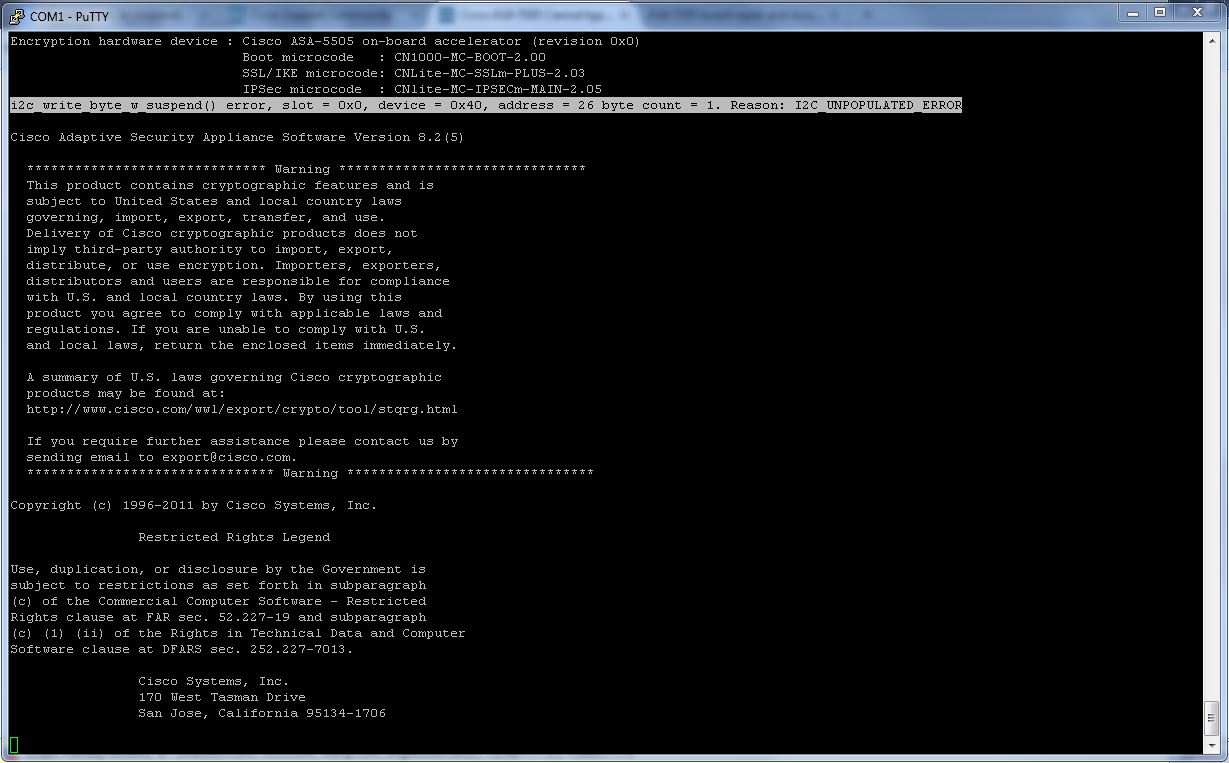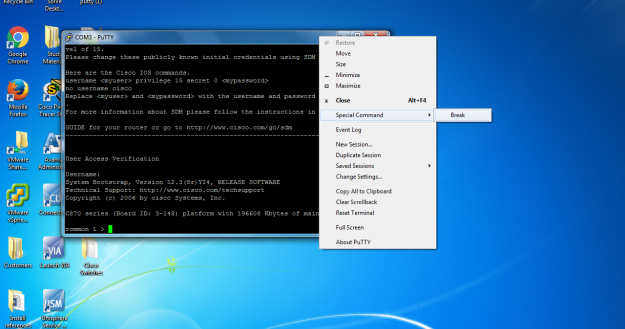Contents
Introduction
This document provides standard break key sequence combinations for the most common operating systems, and some tips on how to troubleshoot problems.
- Break Sequence for ASR 1002-X Hello, I have made a rookie mistake while configuring my ASR 1002-X Router. Cisco Nexus 1000V cloud switch is a virtual appliance.
- The Break Character For whatever historical reason (I used to know, but I’ve forgotten) the break character for Cisco IOS command line is Ctrl-Shift-6 and X.

What is the difference between sending a standard break sequence using Control+Break and a special break command using PuTTY? The reason for asking is that my colleague could not send a break using the Control+Break keyboard keys but was able to interrupt to booting of an ME3600-X switch using the special break command from the PuTTY menu, which I find rather weird. Here’s how Cisco describe the problem: Routers with ROMMON version 15.0 (1r)M1 fail to respond to the break sequence command received from a device connected to the console port. This failure prevents normal password recovery of the device. If you have a 1941 you can simply pull the CF card to enter into ROMON. The break sequence for “screen” is to use Ctrl-A and then Ctrl-B. The Ctrl-A shifts the focus back to the screen process (away from the serial console) and the Ctrl-B issues the break sequence. You may need to break more than once. This is done by Ctrl-A, Ctrl-B, Ctrl-B, Ctrl-B.
The Electronic Industries Association RS-232 logic level uses +3 to +25 volts to signify a Space (Logic 0) and -3 to -25 volts for a Mark (logic 1). A break signal is when the data line remains in the space condition for a specified duration, usually 100 ms to ½ second. All characters begin with a start bit and end with a stop bit (and also a parity bit or two). The level condition of the start and stop bits is always opposite. So, no character combination can look like the break signal. A break signal enables you to access a ROM Monitor on Cisco IOS® devices when a password recovery is necessary.
Prerequisites
Cisco Break Sequence Dell Laptop
Requirements
Putty Break Sequence
There are no specific requirements for this document.
Components Used
This document is not restricted to specific software and hardware versions.
Cisco Break Sequence Mac
The information in this document was created from the devices in a specific lab environment. All of the devices used in this document started with a cleared (default) configuration. If your network is live, make sure that you understand the potential impact of any command.
Conventions
Refer to Cisco Technical Tips Conventions for more information on document conventions.
Standard Break Key Combinations
| Software | Platform | Operating System | Try This |
|---|---|---|---|
| Hyperterminal | IBM Compatible | Windows XP | Ctrl-Break |
| Hyperterminal | IBM Compatible | Windows 2000 | Ctrl-Break |
| Hyperterminal | IBM Compatible | Windows 98 | Ctrl-Break |
| Hyperterminal (version 595160) | IBM Compatible | Windows 95 | Ctrl-F6-Break |
| Kermit | Sun Workstation | UNIX | Ctrl-l |
| Ctrl-b | |||
| MicroPhone Pro | IBM Compatible | Windows | Ctrl-Break |
| Minicom | IBM Compatible | Linux | Ctrl-a f |
| ProComm Plus | IBM Compatible | DOS or Windows | Alt-b |
| SecureCRT | IBM Compatible | Windows | Ctrl-Break |
| Telix | IBM Compatible | DOS | Ctrl-End |
| Telnet | N/A | N/A | Ctrl-], then type send brk |
| Telnet to Cisco | IBM Compatible | N/A | Ctrl-] |
| Teraterm | IBM Compatible | Windows | Alt-b |
| Terminal | IBM Compatible | Windows | Break |
| Ctrl-Break | |||
| Tip | Sun Workstation | UNIX | Ctrl-], then Break or Ctrl-c |
| ~# | |||
| VT 100 Emulation | Data General | N/A | F16 |
| Windows NT | IBM Compatible | Windows | Break-F5 |
| Shift-F5 | |||
| Shift-6 Shift-4 Shift-b (^$B) | |||
| Z-TERMINAL | Mac | Apple | Command-b |
| N/A | Break-Out Box | N/A | Connect pin 2 (X-mit) to +V for half a second |
| Cisco to aux port | N/A | Control-Shft-6, then b | |
| IBM Compatible | N/A | Ctrl-Break |
Tips to Troubleshoot
Problems that you encounter during password recovery often occur because you are not sure about what the break key sequence is for the (non-Cisco) software you use. For software not listed in the table, and for additional information, refer to the documentation of the individual software packages.
The auxiliary (AUX) port is not active during the boot sequence of a router. Therefore, it is no use if you send a break through the AUX port. You need to have connection to the console port, and have these settings:
9600 baud rate
No parity
8 data bits
1 stop bit
No flow control
Some versions of Windows NT have hyperterminal software that cannot send the correct break key signal. Refer to http://www.hilgraeve.com/hyperterminal.html for more information and for an upgrade of the hyperterminal software.
In some cases, the break sequence might not get transmitted properly when using a USB/Serial converter cable. In such cases, use a keyboard with a different connector port (for example, a PS/2).
How to Simulate a Break Key Sequence
Break key sequence simulation is useful if your terminal emulator does not support the break key, or if a bug does not allow your terminal emulator to send the correct signal.
Note: The hyperterminal under Windows NT had this behavior in the past.
Complete these steps to simulate a break key sequence:
Connect to the router with these terminal settings:
1200 baud rate
No parity
8 data bits
1 stop bit
No flow control
You no longer see any output on your screen, and this is normal.
Power cycle (switch off and then on) the router and press the SPACEBAR for 10-15 seconds in order to generate a signal similar to the break sequence.
Disconnect your terminal, and reconnect with a 9600 baud rate. You enter the ROM Monitor mode.
Cisco Break Sequence Traceroute
If all these methods fail to properly send a break, retry the procedures from a different terminal or PC platform.
Related Information
| Page 1 of 1 | [ 4 posts ] |
Cisco Escape Sequence

|
| Author | Message |
|---|---|
| |
| |
| Top |
Cisco Catalyst Break Sequence
| ||
Joined: Thu Jun 24, 2010 3:58 pm Posts: 411 Location:[email protected] |
| |
| Top |
| ||
Joined: Sat Nov 03, 2012 9:01 pm Posts: 8 |
| |
| Top |
| ||
Joined: Wed May 22, 2013 7:48 am Posts: 93 Location: Portugal |
| |
| Top |
| Page 1 of 1 | [ 4 posts ] |
